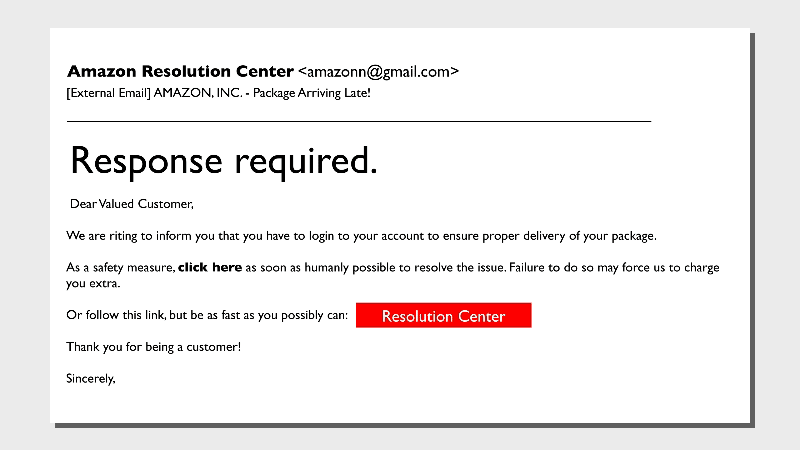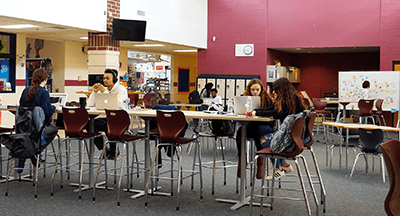
The culture of a K12 school—and who plays a role in shaping that culture—isn’t limited to the actions or people inside the building.
At the end of the school day, students go home to parents and guardians, who have the potential to be some of your biggest advocates. Your school is set in a community, where there are parents as well as other individuals and groups—business owners, volunteers, nonprofit organizations, and cultural institutions—that have a vested interest in what’s happening at your school and how they can help contribute to student success. These community members may not have active students, but they might be alumni, or even parents of future students!
In the midst of an ever-changing school landscape, how do you ensure parent and community engagement? We have a few suggestions:
Get comfortable with being visible
Schools are inherently human-centric, which means it’s important for parents and guardians to see—and have access to—the people who are making the decisions in their child’s school. It’s great to see a superintendent or principal consistently popping up on schools’ social media accounts, posting blogs on the school website, or signing their names to emails—there’s no such thing as being too visible.Engagement requires comfort. The more effort K12 school leaders put into being visible, the more comfortable parents will be—and the more involved they might become, contributing positively to the school culture.
Focus on proactive, multi-channel communication
It’s one thing to post a past-tense “look at what this class learned today!” update on a school social media account, and quite another if all of your parent communications are after the fact. Is there a way for parents to see what their child’s schedule looks like in the months to come—and how they can get involved—through a parent portal or another easy-to-use platform?Outside of the classroom, consider pushing out school announcements and information on initiatives through a variety of mediums: social media, email, virtual meetings, and presentations. For community engagement, this might look like awareness-building efforts like newspaper editorials, television or audio interviews, signage or visuals near the school about upcoming events, or through a strong word-of-mouth campaign.
Stay consistent and constant
Communicate early and often. Putting out important messages on several platforms many times—as opposed to once, one time—will ensure it gets absorbed by all of your stakeholders.If you have limited time and resources, surveying parents and community members to understand how they prefer to receive communications and interact with the school is a great way to narrow your focus.
Ask for feedback
To our last point, one of the best ways to create engagement with your community is to solicit insight into their questions, comments, and concerns about what’s happening at your school or district.Similar to the ways you push out important school communications, this feedback could be requested in a number of ways: surveys, in-person or virtual forums, one-to-one conversations, committee meetings, and more.
Make it easy to engage
The COVID-19 pandemic reshaped many aspects of the K12 school environment, including parent communication. In spite of the challenges caused by a rapid shift to virtual and hybrid learning, technology—specifically, automated messages—has emerged for many schools as a bright spot. Sending emails, SMS messages, and mobile push notifications ensures you’re keeping parents in the loop about critical updates, their child’s academic progress, or important school-wide events.In addition, consider virtual conferences to increase parent participation. No commute, no childcare needed, one less place for parents to be on a busy weekday—they’ll appreciate you for it, and it can lead to…you guessed it, an extra dose of engagement.
Concentrate on delivering accessible information
When we say “accessible,” it’s in two ways: making information easy to find (see above!) and making it easy to understand. Parents and community members aren’t necessarily educators, policy makers, or financial analysts, so presenting information—budget numbers, student data, etc.—in a way that’s easier for your audiences to consume is key.It might be designing an infographic or webpage in a way that helps you tell a story, or taking a closer look at your language and getting rid of the education jargon that’s natural to you. In shedding the content that can be confusing, it can help you build trust and connect with parents and other stakeholders in a more meaningful way.
Why all the effort?
Parent engagement—and community buy-in—is an important part of fostering a positive school culture, and the impacts of that engagement lead to more learning opportunities and increased growth for students. An engaged community will invest more in your school or district. They’ll make it a point to turn out for school board elections and vote on referendums. Engaged groups of parents might even make the decision to run for school board, leading to more diversity and representation.When families, communities, and schools are engaged, it’s easier to work together. The more harmony we can achieve, the better the outcome will be for the students in your care.
Follow-up resource: Looking for more ways to foster community and parent engagement and build a solid school culture? Check out these tools:
Parent Engagement: Beyond the Homework HelperHow Stock Responses Improve Parent Communication
11 Ways Schools Can Reach Out to Families
WHAT'S NEXT FOR YOUR EDTECH? The right combo of tools & support retains staff and serves students better. We'd love to help. Visit skyward.com/get-started to learn more.

|
Erin Werra Blogger, Researcher, and Edvocate |
Erin Werra is a content writer and strategist at Skyward’s Advancing K12 blog. Her writing about K12 edtech, data, security, social-emotional learning, and leadership has appeared in THE Journal, District Administration, eSchool News, and more. She enjoys puzzling over details to make K12 edtech info accessible for all. Outside of edtech, she’s waxing poetic about motherhood, personality traits, and self-growth.




